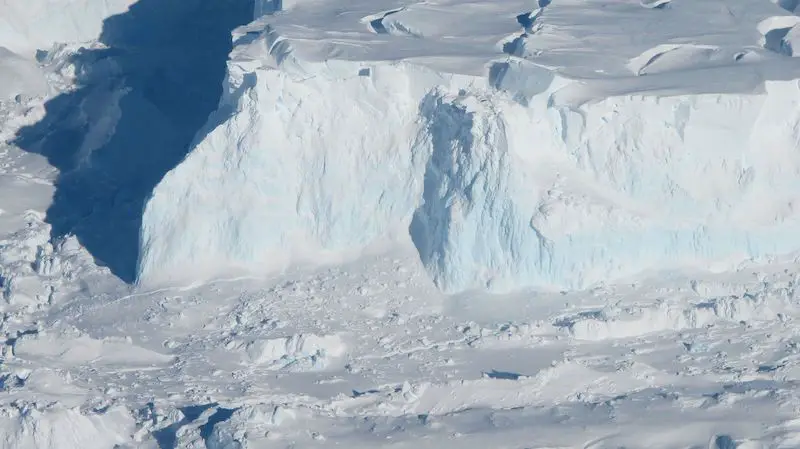Mystery of Antarctica: One of the most compelling mysteries about our changing planet over the past five years has been the sudden and dramatic drop in ice surrounding Antarctica. Prior to 2015, the ice that encased the frozen continent defied expectations and bucked the trend of other cold environments around the planet by actually growing in size.
While the Arctic saw its ice extant shrink steadily, and glaciers around the world retreated, the Antarctic ice grew thicker and spread wider, culminating in 2014 with record levels. Since then however, all of those gains have been swept away, with Antarctica shedding ice at an alarming rate. Now, scientists believe they have an answer as to why this is happening, and whether or not we can expect it to reverse course anytime soon.
Data from the British Antarctic Survey published earlier this week in the Geophysical Research Letters indicates that strong, very warm winds were likely the start of downfall of the Antarctic ice.
Those same winds brought very intense storms to the region as well, with both weather phenomenon working together to break up the ice and send it drifting out to see. By 2016, the ice extant had gone from its record highs, to record lows. In the blink of an eye, the fortunes of an entire continent had been reversed, and aren’t likely to change all that soon either.
Between 2015 and 2016, the amount oof Antarctic sea ice dropped by an astounding 463,322 square miles (1.2 million square kilometers). To put that in perspective, that’s about twice the size of France. The first changes started to occur in September of 2015, when the largest storm ever recorded in the Weddell Sea occurred.
It was followed by the warmest November that the Antarctic has ever seen, with temperatures rising 5.4 degrees Fahrenheit (3 degrees Celsius) above normal. That caused polynya to open in the ice for the first time in decades. These large ice sinkholes allowed warming ocean water to flow in, creating a cascading effect that eroded the icy shell extremely rapidly.
Researchers are quick to point out there are a number of significant factors at play in this environmental collapse. For instance, the famous hole in the ozone layer above Antarctica has likely contributed to increased numbers and intensity in the storms that occur there. Add in warming air temperatures and rising oceans, and it now seems unlikely that the sea ice will return to its normal size and scope in our lifetime. The cascade effects of all of these influences are having a catastrophic impact on the Antarctic, and it will likely take centuries for it to even begin to recover.
This is obviously grim news at a time when the world is in a grim state. We’ve been warned by climatologists for years that we were approaching certain tipping points. It seems that we may have passed one, at least as far as the Antarctic is concerned.
- Gear Review: The Xero Scrambler Mid is an Ultralight Hiking Shoe for Spring - March 1, 2023
- Gear Review: Yeti Roadie 48 Wheeled Cooler - August 18, 2022
- Kristin Harila Continues Pursuit of 8000-Meter Speed Record - August 16, 2022
